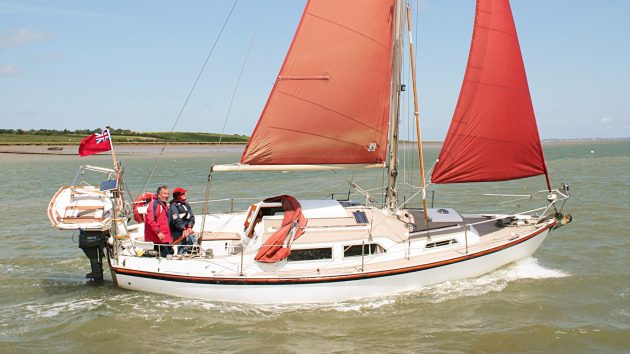Each month James Stevens, who spent 10 of his 23 years at the RYA as chief examiner answers a reader's question. This month, when do you need a liferaft?
Bill and George, both retired, have recently bought an 8m bilge keel cruiser. They had it surveyed and it seems structurally sound, the engine, fuel and gas systems are safe, but it looks a bit shabby and the roller-furling headsail needs replacing. It has nav lights, an inflatable dinghy, echo sounder, radar reflector, sound signal, GPS and a few charts.
They intend to day sail around the Solent, with the occasional trip to Poole. They are reasonably competent but definitely budget sailors, avoiding marinas and frequently drying out overnight to save mooring fees.
They have old but serviceable life jackets and wet weather gear but the time has come to decide what other safety kit to buy. Bill thinks that top priority is a liferaft,
even before a new headsail. If the yacht sinks it is essential and their only hope of survival.
George thinks the chances of needing a liferaft are minimal with the type of sailing they are proposing, and if they get into trouble a marine radio and EPIRB will allow them call for help from the rescue services who should arrive rapidly in that area. What would your priorities be?
James Stevens’ answer
This is a difficult one and what follows is a personal opinion based on my reading of accident investigations. The answer for this pair, with their modest ambitions, is different than it would be for an offshore yacht.
I believe that a small, well-found yacht undertaking short trips in fine weather is very unlikely to need a liferaft. Fire hazards should be kept to a minimum and Bill and George need to be sensible with navigation and weather awareness. Being able to call for help with an EPIRB is essential and a marine radio is important.
A harness is useful to go with the lifejackets with somewhere to clip it on board but this is fair weather yachting, so if conditions are looking hazardous they should stay in port. Their cruising will take them little more than an hour or two from a safe haven, so the chances of being caught out by poor weather are minimal.
A boarding ladder is sensible in case of an accident at sea or transferring from the dinghy. Some navigational equipment is necessary: compass, almanac and charts, binoculars, echo sounder and a basic GPS.
Thousands of small yachts sail short distances around the UK safely and without needing to call for help. In windy weather they enjoy the protected shoal waters found in most harbours. Many owners say the smaller the yacht the more fun you have.
Enjoyed reading this?
A subscription to Yachting Monthly magazine costs around 40% less than the cover price.
Print and digital editions are available through Magazines Direct – where you can also find the latest deals.
YM is packed with information to help you get the most from your time on the water.
-
-
- Take your seamanship to the next level with tips, advice and skills from our experts
- Impartial in-depth reviews of the latest yachts and equipment
- Cruising guides to help you reach those dream destinations
-
Follow us on Facebook, Twitter and Instagram.






